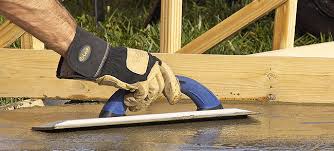BLOG
The Different Types Of Ready Mix Concrete
by TRP Ready Mix on August 24, 2016
Whether you’re a big-time contractor or just someone who dabbles in the DIY department from time to time, ready mix concrete from a trusted concrete supplier is an invaluable service. Ready mix concrete can be used to pour foundations, front steps, patios, floors or several other household projects.
This kind of versatility has grown the different types of ready mix concrete provided by concrete suppliers over the years from just a couple of standard mixes to over a dozen different types.
Here are the most common types of ready mix concrete and what they’re most often used for:
Self-leveling concrete. This highly fluid type of ready mix concrete is used by concrete suppliers when a level surface is needed in the final product, such as when they’re installing a basement floor. Because of its highly fluid state, it flows around a space, leveling itself completely in the process, eliminating the need to be leveled by hand.
Accelerated curing concrete. Traditionally, concrete needs around five to seven days to cure completely. With this type of accelerated curing ready mix concrete though, contractors can cut down on the amount of time they need to wait before moving on to the next step of their projects. Most concrete suppliers offer this type of concrete as an option, since it saves time and money on the behalf of their clients.
High strength concrete. This type of ready mix concrete is exactly what it sounds like: a type of concrete that has added strength. This type of concrete is mixed by the concrete supplier with a special formula, and can be used in any application where standard concrete would be used.
Fibre-reinforced concrete. Used for structural purposes, this type of ready mix concrete has micro or macro fibres mixed into it. Often, it is strong enough for contractors or concrete suppliers to forgo extra support systems like steel rebar reinforcement. Depending on the mix of the concrete, it can also help reduce early-stage shrinkage and cracking in temperature changes – which is great for harsh winters. Fibre-reinforced concrete needs more work to be leveled, because of the fibrous texture, but then bonds to be one of the strongest pourable materials available.

